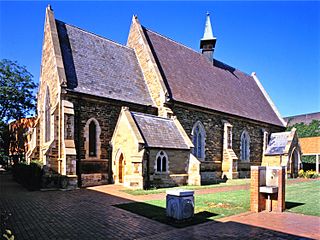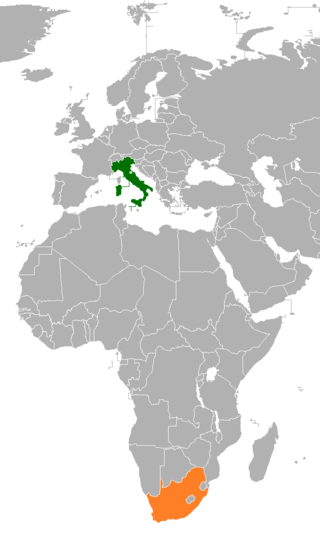History
Apart from a few Catholic missionaries, Italian emigration to South Africa was very limited until the end of the 19th century. Some Italian traders, such as Theresa Viglione, [2] were present in small numbers alongside the Boers, when they made their Great Trek towards the Transvaal and Natal, but only in the early 20th century did the Italians form a small community of about 5,000 people, concentrated in the major cities of the Union of South Africa.
In 1900, there were 200 Italians in the Cape Colony and before 1910 about 1,200 in the Transvaal which was hugely reduced after the support given by Camillo Ricchiardi's Italian Volunteer Legion to the Boer insurgents. Many were miners (gold prospectors), traders and builders. However, already in 1915, there were almost 4,000 Italians in all of South Africa, and among them many were professionals such as engineers, doctors and lawyers. [3] Italian immigrants mainly found employment as stonemasons, bricklayers, craftsmen, carpenters, metal workers and railway workers. [4]
During Fascism there was almost no Italian emigration to South Africa, and at the outbreak of World War II about 800 Italian South Africans were interned for security reasons. [5]
With World War II and Italy's entry into the war against England, it was the beginning of a difficult period for the Italian community in South Africa: in fact, the government of General Smuts allied itself with the British and interned around 800 Italians, with Germans and Afrikaners, in various concentration camps. During the first half of 1941, the first prisoners of war also arrived, the number of which reached 90,000. The huge field that hosted them, Zonderwater (which means "without water"), a real prison-city, still exists and every year, in the month of November, the official ceremony of commemoration of the deceased takes place to honor the over 400 prisoners buried there. At the end of the conflict, from May 1945, the surviving compatriots began to be repatriated but 800 chose to stay and another 20,000 returned. [6]

At the end of the 1940s, many thousands of Italian ex-internees, who had established working relationships with South Africans during their imprisonment, decided to emigrate to South Africa. This was the case of the father of Italian South African runner Marcello Fiasconaro, an Italian pilot shot down during a bombing in Kenya and interned in Zonderwater. Numerous families of Istrian-Dalmatian exiles reached South Africa. [7]
In the 1950s, the South African government began to favor the immigration of Italians, who settled mainly in the Cape Province. Subsequently, with the beginning of Apartheid, a selected flow of Italians was promoted, also with the aim of increasing the white population in South Africa.
In the early 1970s, there were over 40,000 Italians in South Africa, scattered throughout the provinces but concentrated in the main cities. Some of these Italians had taken refuge in South Africa, escaping the decolonization of Rhodesia and other African states.
In the 1990s, a period of crisis began for Italian South Africans and many returned to Europe; however, the majority successfully integrated into the multiracial society of contemporary South Africa.
The Italian community consists of over 77,400 people (0.1–2% of South Africa's population), [1] half of whom have Italian citizenship. Those of Venetian origin number about 5,000, mainly residing in Johannesburg, [8] while the most numerous Italian regional communities are the southern ones. The official Italian registry records 28,059 Italians residing in South Africa in 2007, excluding South Africans with dual citizenship. [9]









